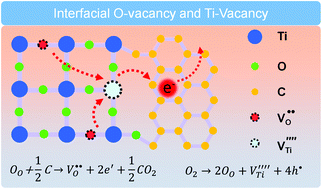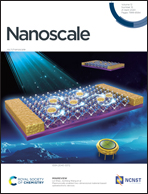Interfacial co-existence of oxygen and titanium vacancies in nanostructured TiO2 for enhancement of carrier transport†
Abstract
The interfacial co-existence of oxygen and metal vacancies in metal oxide semiconductors and their highly efficient carrier transport have rarely been reported. This work reports on the co-existence of oxygen and titanium vacancies at the interface between TiO2 and rGO via a simple two-step calcination treatment. Experimental measurements show that the oxygen and titanium vacancies are formed under 550 °C/Ar and 350 °C/air calcination conditions, respectively. These oxygen and titanium vacancies significantly enhance the transport of interfacial carriers, and thus greatly improve the photocurrent performances, the apparent quantum yield, and photocatalysis such as photocatalytic H2 production from water-splitting, photocatalytic CO2 reduction and photo-electrochemical anticorrosion of metals. A new “interfacial co-existence of oxygen and titanium vacancies” phenomenon, and its characteristics and mechanism are proposed at the atomic-/nanoscale to clarify the generation of oxygen and titanium vacancies as well as the interfacial carrier transport.



 Please wait while we load your content...
Please wait while we load your content...